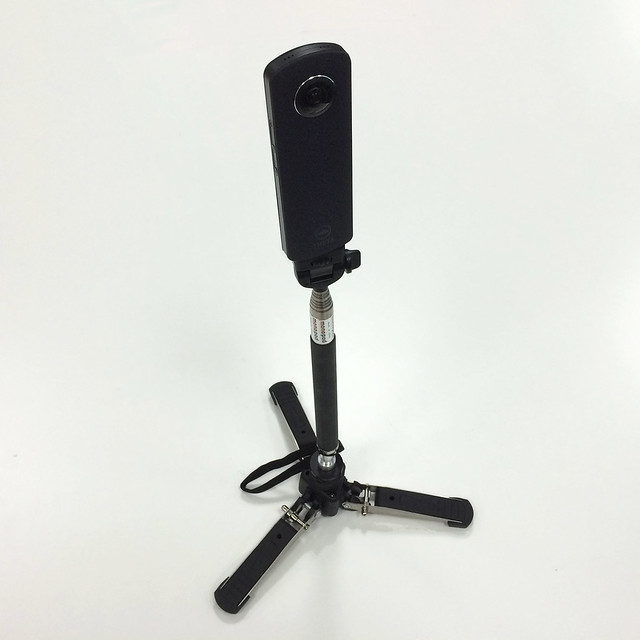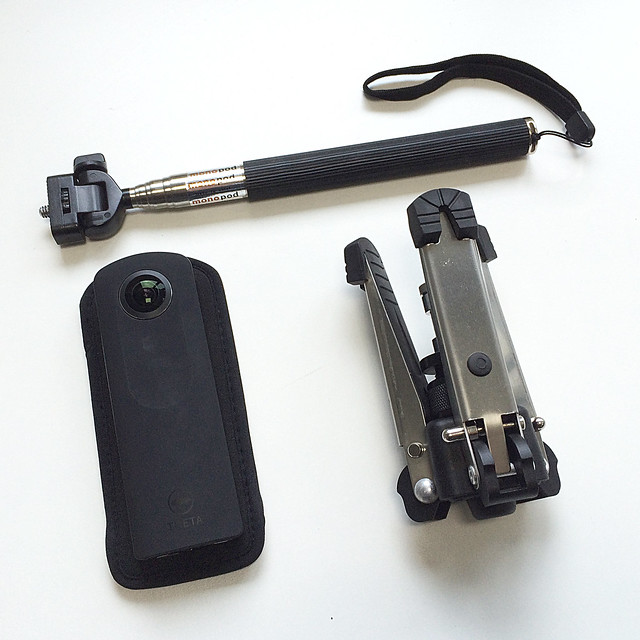Supporting the little Ricoh 36-degree movie camera has its own challenge. What you tend to want is a support which has the smallest footprint and so is not a hideous distraction to your 360-dgree stills and movies. In short, you want your 360s to appear as iff they are magically floating in space with no glaringly obvious means of support!
So, most Theta S owners go to reasonable lengths to conceal their supports, or at least make them as 'low profile' as they can. And here is my solution to this issue...
It's a very simple solution (to a simple problem) and consists of a cheap selfie stick and the three-foot stand from my video monopod. The key is that the selfie stick must have a screw mount at the bottom to fix it to the monopod stand, and you will also (perhaps) need a bush mount adapter to convert the large screw mount (1/4" thread) of the stand to the small screw (3/8" thread) mount of the selfie stick.
This results into a compact stand 'kit' that can be quickly put together to make a telescopic stand which is about three and a half feet tall. Enough to lift the Theta S camera up for to get a decent and steady 360 view without you being in the picture.
Here's a screenshot of the visual 'footprint' you will see using this minimalistic stand...
 |
| Looking straight down in your 360 still or video, you will only see this small hint that you are using a stand. You could hide this further by adding a 'disc' logo if you want. |
If you join one of the Ricoh Theta S online community forums - like the Theta S Facebook group - you will see other alternatives to this solution. Being a member of a group like this is an ideal way to pick up handy tips like this.



